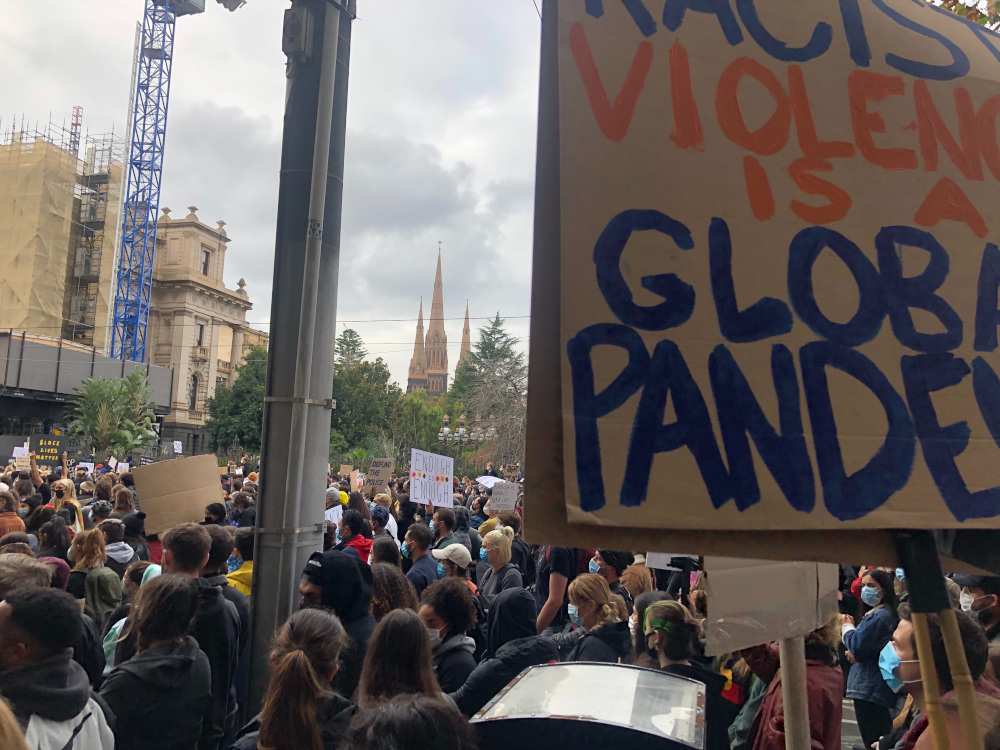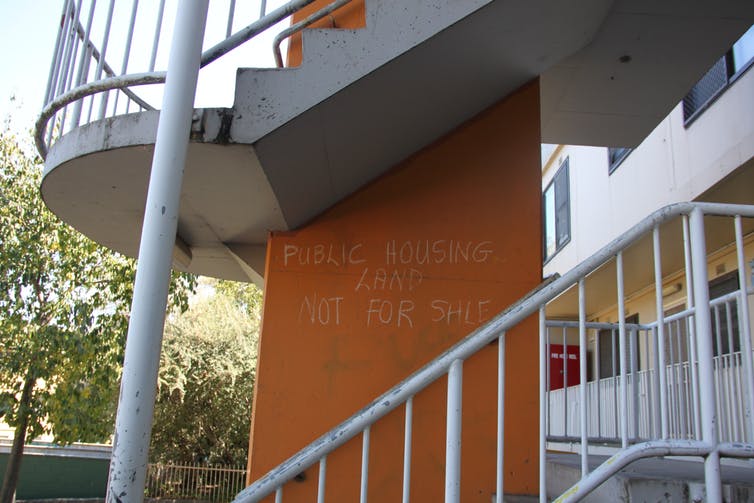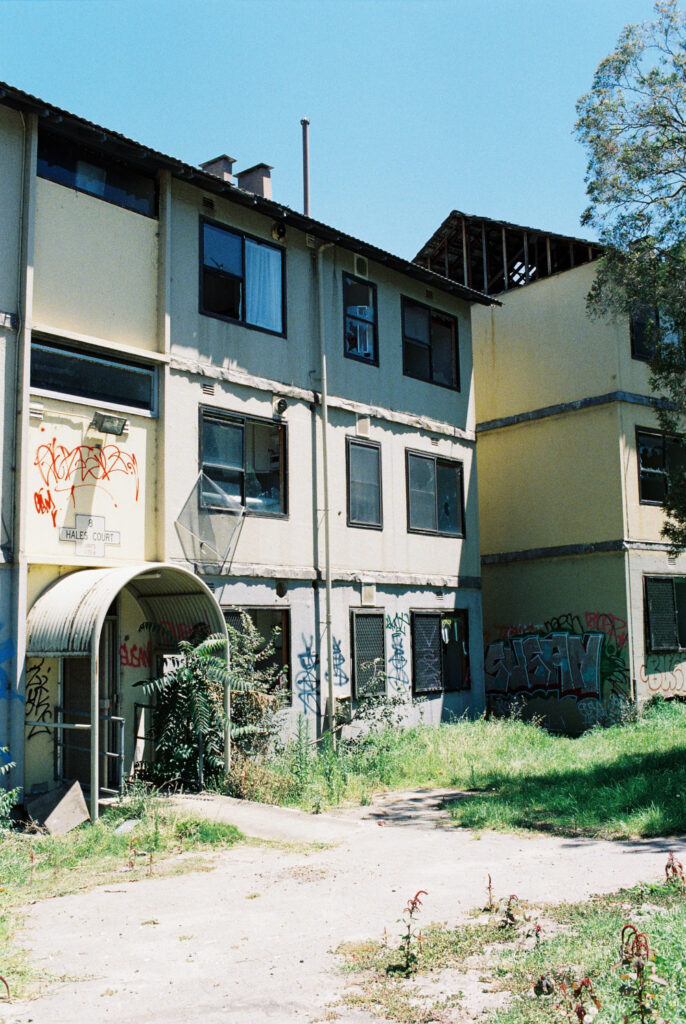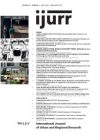When the images of what was done to 17-year-old Dylan Voller in a Northern Territory (NT) juvenile prison were broadcast around the country in 2016, there were gasps of horror from the urban elite (including me). Dylan was violently brutalized by Northern Territory correctional service officers in the infamous Don Dale juvenile detention centre. He was trussed, hooded and strapped to a restraint chair and left in isolation for more than two hours – because he said he wanted to harm himself. The incident sparked the usual things – a Royal Commission into correctional services practices in the NT and a spectacular lack of action by any government or authority to respond at all despite the Commission’s findings of ‘systemic and shocking failures.’ While the NT Government promised to close and demolish Don Dale prison, it remains open, and two more youth detention centres have been built since. On the rare occasions when correctional officers are prosecuted, courts find routinely in their favour even when their actions involve gassing, choking and bashing children who had been sitting quietly in their cells (Anthony 2018).
This is not an isolated incident. It is the daily experience of thousands of young Aboriginal people around so-called Australia, where around 48% of incarcerated young people in Australia are Aboriginal despite being only 6% of the young adult population (AIHW 2020). In the Northern Territory, the statistic that 100% of incarcerated young people are Aboriginal occurs alarmingly often. It is also the standard pattern of White state non-response: incident, inquiry, hollow promise, zero action, deepening incarceration rates, and death. On seemingly endless repeat, decade after decade.

Thousands attended the Black Lives Matter rally in Melbourne in 2020 protesting police brutality against Indigenous people. Photo: Libby Porter.
It is also not merely an ‘incident’ but a constituent feature of the settler state in contemporary settler-colonial Australia. It is why 475 First Nations people have died in custody in the 30 years since the 1991 Royal Commission into Aboriginal Deaths in Custody (RCIADIC). It is why “very few of the RCIADIC recommendations have been implemented, and in fact, many of the recommendations have been directly contravened by government laws and policies” (Anthony et al. 2021, p.1). The government-commissioned reports, where huge sums are paid to companies like Deloitte, claim broad success and wide implementation. Not a single White perpetrator has been held to account for any of the Black lives lost, and rates of incarceration of Indigenous people are increasing, not decreasing, making First Nations people in Australia the most incarcerated people in the world.
This is White supremacy in action.
Understanding that the Australian nation-state was founded on a planned eradication of Indigenous lives, lands, bodies, and knowledge systems makes clear that institutions like Don Dale are not aberrations but essential cogs in the violent machinery of contemporary settler-colonial Australia. The nation-state is founded on not merely the idea but the practice of racialism, which Cedric Robinson defined in Black Marxism as “the legitimation and corroboration of social organization as natural by reference to the ‘racial’ components of its elements” (p.2) It explains those confronting and yet abstracting statistics so commonly heard and yet so systematically ignored, such as that a First Nations person in Australia is 10 times more likely than a non-Indigenous person to die in custody. It explains, though cannot hold the pain and injustice, of the recent acquittal of the police officer who shot and killed Aboriginal woman JC. Indigenous death is a structural feature of the Australian polity.
This is laid bare in a recent documentary, Incarceration Nation, that exposes the brutal reality of the police and prison system as an essential component of the mechanics of violence required by settler-colonialism, and the extraordinary courage and resistance of First Nations people in the face of that violence. I write here as a White (un)settler, someone who benefits from this eradication logic. The violence of the carceral state is not my lived experience; it’s barely in my field of vision. Bodies like mine aren’t required to sit up at night working out how to free my children from cages. The only reason that we, as a colonial nation, have not yet entirely succeeded in the death drive of settler-colonial violence is simply because of the strength and courage of First Nations struggle and, as Chelsea Watego says, Black excellence.
Abolitionist geographers have long noted the relationship between dispossession, carcerality and racial capitalism where, as Ruth Wilson Gilmore shows in Golden Gulag, “punishment has become as industrialized as making cars, clothes, or missiles, or growing cotton” (p2). As private multinational security firms become increasingly embedded in the mechanisms of the carceral state, these relationships become clearer. Take Serco for example, a multinational company with fingers in every region of the world and global revenue of $3.9b. Serco designed, built, and now operates Australia’s largest prison, the Clarence Correctional Centre in NSW, with a capacity to incarcerate 1700 people. State contracts with private prison operators usually have a minimum population requirement – for example, a prison will be kept at 80% capacity at minimum. This creates a structural incentive to keeping prisons populated: the state, through its police forces, needs to meet its contractual obligations, and the private company proves itself as an essential service and banks the cash paid by the state to keep each prisoner. Each party has a vested interest in a continual supply of prisoners and the growth of the prison complex. New prison construction, such as a recently announced youth prison in one of Melbourne’s most disadvantaged neighbourhoods, is justified in government press releases and Departmental websites as creating jobs, stimulating local economies and ‘keeping communities safe’.
In Golden Gulag, Gilmore observed that in the history of the modern prison, people who lacked formal rights “rarely saw the inside of a cage, because their unfreedom was guaranteed by other means” (p12). In early colonial Australia, the unfreedom of First Nations people was once secured by neck chains, spatial confinement on reserves and missions, and ruthless surveillance through regulation. Children were removed from families and communities and taken into abusive institutions. This practice of attempted eradication continues, with more Aboriginal children removed today than ever. Assimilation policies often simply redefined who counted as Aboriginal, erasing with the stroke of a pen identities, kinship, and cultural communities. The built form of the prison was a bit superfluous under these conditions.
This may offer a distinctive clue as to what drives the expansion of prisons and, more broadly, the carceral logic of the state in recent years. For, as Gilmore states, “it takes muscular political capacity to realize widescale dispossession of people who have formal rights” (p12). Such formal rights recognition in Australia came only recently, during the 1960s and 1970s self-determination era of Freedom Rides, Tent Embassy and a referendum in which the settler state finally counted Indigenous people as part of the population. For settler colonialism to endure in such a context, the unfreedom of First Nations people must now be organized through new and other means. Enter the carceral state in which prison complexes, policing practices and criminal justice systems are the sinews of the muscular political capacity of late colonial Australia.
In the so-called State of Victoria, where I live, the prison population has more than doubled in the past 20 years. In 2019, more than 8,000 people in Victoria were incarcerated, and nearly half have not been sentenced. And around 9% of those incarcerated today are First Nations people, despite making up less than 1% of the population in Victoria. Incarceration of Indigenous women in Victoria has risen 110% from 2010-2020. More than half of these women have not been sentenced. This burgeoning prison population has been used as justification for a massive expansion in the prison complex itself across Victoria, with multiple new prison facilities built or planned, costing billions. In the 2019 State Budget, for example, nearly $2b was allocated to expanding prisons. None of this is occurring because crime has increased, as recent figures demonstrate the opposite. Swelling prison populations is a result of a broader policy ecology that organizes dispossession and displaceability. Prisons are literally generators of profit from warehousing bodies, usually racialized bodies, that have been deemed displaceable.
This is directly linked to a slow and deepening emergency in housing. As prison populations grow, so does the number of people experiencing homelessness. And this is in direct relationship to the demolition and privatization of public housing, which is being systematically demolished and ‘renewed’ while more and more people find themselves in housing precarity. I live in a city where houses sit empty, for they are really just offshore bank accounts, while people sleep rough on their ancestral lands. Such trends not only have insidious effects on Aboriginal bodies, but they also disproportionately affect First Nations people because of White supremacy, which brings about greater economic marginalization, experiences of homelessness, racialized policing, and disproportionate rates of incarceration.

Protest sign against privatization of public housing in Melbourne. Photo: David Kelly. Used with permission.
Yet resting understanding of this relationship on simple disproportionality – unjust as it is – misses paying attention to the deeper concern that this is settler-coloniality functioning precisely as it is designed. For the carceral nature of the Australian settler state extends well beyond the prison walls and the shockingly familiar routines of violent, racialized policing practices. The violence that destroys Indigenous lands and waters grows from the same foundations as the violence on Indigenous bodies. Settler colonialism is, as Glen Coulthard shows in Red Skins, White Masks, a perpetual taking up of Indigenous lands to feed the systems, particularly of urbanization, that ‘settling’ requires.
Yet ‘taking up’ and ‘settling’ mask a violent process with gentle words. Take the Ranger Uranium mine as one example. A vast open-cut mine has destroyed the Country of the Mirarr people to extract uranium to feed the nuclear power plants, a major urban power source. The Mirarr people, who never wanted the mine, are experiencing a health crisis. Stillbirth rates are more than twice as high, and rates of cancer are almost 50% higher than among Aboriginal people elsewhere in the Northern Territory (Schultz 2021). Mirarr people knew it was a ‘sickness country’; their law had kept that country and people safe for tens of thousands of generations until 1981, when the mine was imposed upon them. They have been sick ever since.
The destruction of sacred Djabwurrung trees in Victoria by the State Government to make way for a highway upgrade and the blowing up of sacred caves at Juukan Gorge by mining giant Rio Tino are more examples of the same structure of violence. To frame any of these as isolated incidents is, just like incarcerated and abused children, to miss how this violence is a constituent of the whole order itself. As Tess Lea states in her book Wild Policy, “land, and what can be extracted from it, feeds and sustains every urbanite in every city across the world”. And these are no mere ‘examples’, but life-worlds. Places that hold kinship connections, law, ancient knowledge, and communities. These, too, are what colonial violence seeks to destroy.
The Australian nation-state also applies these violent logics of carcerality to other racialized bodies by defining people seeking asylum as non-human and subjecting them to a vicious and cruel regime of indefinite incarceration. As Crystal McKinnon observes, this is a continuation of a settler state that has always relied on “violent containment” to create its own sovereignty on stolen lands. White Australia, having arrived and taken over here, “will decide who comes to this country and the circumstances in which they come”, as then Prime Minister John Howard stated in 2001. Howard is one of the architects of the Australian immigration detention system, one of the most punitive in the world. A system in which companies like Serco extract further profits, as they build, design, operate and staff Australia’s onshore and offshore detention centres. Australia, at the time of writing, had 1,459 people seeking asylum locked up in onshore detention centres, and another 228 people in two offshore detention centres or in the community on Nauru and Manus Island. People languish for years in Australia’s refugee detention system, and those offshore have no prospect of resettlement here. The Australian nation-state is like the bully in the playground, taking up all the space and policing their usurped territory with violence and fear. A reminder as Ruby Hamad has demonstrated that “the criteria of clinical narcissism also eerily apply to whiteness and racism” (p140).
Detention centres, prisons, violent police tactics, open-cut mines, punitive policy settings, public housing displacement, and the flow of capital eternally funnel toward extraction, violence, and decay. These are the granular violences underpinning the contemporary urban experience here in Australia but in so many other places (and in other ways) around the planet. Physical and geographical expansion of systems of incarceration is one dimension, but so is the creation of new social and legal territories of violent social control: swelling numbers of people who work for private and public agencies charged with the maintenance of that control, the extension of criminalized categories, a continuous unravelling and distortion of conventional lines of accountability through privatization, the entrenchment of White supremacy in every single institution including Universities, and the proliferation of formal and informal media entrenching racist and racialized discourses that normalize incarceration and violence as legitimate.

Public housing estates across Melbourne are cleared and abandoned ahead of privatization under a so-called ‘urban renewal’ agenda. Photo: Celeste de Clario. Used with permission.
Of course, these matters are being continuously theorized, exposed, and critically understood by those who have to endure this violence. In so-called Australia, the intellectual work of scholars including Aileen Moreton-Robinson, Chelsea Watego, Crystal McKinnon, Bronwyn Carlson, Larissa Behrendt, Amy McQuire, Amanda Porter, Sandy O’Sullivan (there are so many more) is of profound importance to understanding the intersections of racialism, colonialism and urbanism. Yet mainstream urban research, in Australia at least, is barely able to see these intersections. We are a principally White discipline, silent about the truths that people marked by colonial violence have been required to shout about for so long (see Birch 2021). Those who are paying attention to these intersections are exposing how settler-colonial violence is manifest across housing (Grandinetti), gentrification (Chatterjee), smart city technology (Carlson et al.), extractive infrastructures (Kelly), urban climate injustice (Osborne), anti-capitalist politics (Daley) and urban property regimes (Blatman). As Natalie Osborne reminds us, paying attention to what is already “growing in the fissures” and what is being attended and nurtured in ruins is political and urgent work.
Grassroots, Indigenous-led organizations are doing this urgent political work right now, in the face of these intersectional violences. The Dhadjowa Foundation advocates for change and organizes support for families grieving a death in custody. Abolitionist movements being advanced by organizations like Sisters Inside and Flat Out at the same time provide vital support to women and gender-diverse people impacted by incarceration. Deadly Connections provides community-led solutions to the violence First Nations people experience through over-representation in the justice system. Homes Not Prisons has mounted a campaign in Victoria to stop the endless expansion of prisons and instead fund public housing.
The work of these and others demonstrates how racialized death-making policy settings are part of the fabric of our cities. To look away is to remain complicit.
Acknowledgements: This essay was written on the unceded sovereign lands of the Wurundjeri Woiwurrung people, and I pay my respects to those whose care and law sustain my uninvited presence here. Thanks to my colleague and friend David Kelly for insightful comments and the editors of the IJURR Spotlight On series for helping sharpen this piece. Any messes are all my own.
Libby Porter (Twitter) is a researcher and educator at the Centre for Urban Research, RMIT University in Melbourne Australia where she tries to understand how dispossession, displacement and abandonment are perpetually sustained in settler-colonial cities.
All essays on Racial Capitalism
Introduction: Racial Capitalism
Nik Theodore
The Stuff of Life: Frontier Infrastructures of Reproduction
Omar Jabary Salamanca
Racial Violence is Woven into the Fabric of our Cities
Libby Porter
The Cost of Platinum: Legacies of Violence and Subordination of Black Miners in South Africa’s Mining Towns
Asanda Benya
Policing, Racial Capitalism and the Ideological Struggle Over Public Safety
M.M. Ramírez
Blackness and Metropolitan Adjacency
AbdouMaliq Simone
Black Women on the Left of the Left in Brazilian Politics
Keisha-Khan Y. Perry & Edilza Sotero
Related IJURR articles on Racial Capitalism
Hamburg’s Spaces of Danger: Race, Violence and Memory in a Contemporary Global City
Key Macfarlane & Katharyne Mitchell
The Nomad, The Squatter and the State: Roma Racialization and Spatial Politics in Italy
Gaja Maestri
The Limits of Homeownership: Racial Capitalism, Black Wealth, and the Appreciation Gap in Atlanta
Scott N. Markley, Taylor J. Hafley, Coleman A. Allums, Steven R. Holloway & Hee Cheol Chung
Reappearance of the Public: Placemaking, Minoritization and Resistance in Detroit
Alesia Montgomery
Geographies of Algorithmic Violence: Redlining the Smart City
Sara Safransky
Sowing Seeds of Displacement: Gentrification and Food Justice in Oakland, CA
Alison Hope Alkon & Josh Cadji
‘Wilding’ in the West Village: Queer Space, Racism and Jane Jacobs Hagiography
Johan Andersson
‘Troubled Assets’: The Financial Emergency and Racialized Risk
Philip Ashton
Racialization and Rescaling: Post‐Katrina Rebuilding and the Louisiana Road Home Program
Kevin Fox Gotham
Race and the Production of Extreme Land Abandonment in the American Rust Belt
Jason Hackworth
Talkin’ ’bout the Ghetto: Popular Culture and Urban Imaginaries of Immobility
Rivke Jaffe
The Structural Origins of Territorial Stigma: Water and Racial Politics in Metropolitan Detroit, 1950s–2010s
Dana Kornberg
Controlling Mobility and Regulation in Urban Space: Muslim Pilgrims to Mecca in Colonial Bombay, 1880–1914
Nick Lombardo
Neoliberalism, Race and the Redefining of Urban Redevelopment
Christopher Mele
Reconfiguring Belonging in the Suburban US South: Diversity, ‘Merit’ and the Persistence of White Privilege
Caroline R. Nagel
Race Matters: The Materiality of Domopolitics in the Peripheries of Rome
Ana Ivasiuc
Fear and Loathing (of others): Race, Class and Contestation of Space in Washington, DC
Brandi Thompson Summers & Katheryn Howell
Everyday Roma Stigmatization: Racialized Urban Encounters, Collective Histories and Fragmented Habitus
Remus Creţan, Petr Kupka, Ryan Powell & Václav Walach
Disaster Colonialism: A Commentary on Disasters beyond Singular Events to Structural Violence
Danielle Zoe Rivera
The Aesthetics of Gentrification: Modern Art, Settler Colonialism, and Anti-Colonialism in Washington, DC
Johanna Bockman
Beyond the Enclave of Urban Theory
Austin Zeiderman
